Thursday, May 31, 2012
Genome #10 Environment
Matt Ridley explains that we humans would contribute any form of an illness or whatnot to the environment. However, that is not totally true. The environment is believed to give people the common colds or a fever. That is true in terms of being a carrier for these illnesses. That is not true when we look at each and everyone's genes. Everyone is different and thus it accounts for different immunity. One person can have a weak immunity and another person can have a stronger immunity. Having a weak or strong immunity will determine who is more susceptible to the common cold. A weak immunity will not have as much defense against illnesses and thus causing you to get sick more. A strong immunity will have more defense against it because it has been exposed to the illness before thus, making the person not as susceptible as others.
Genome # 9 Free Will
In this chapter Matt Ridley explains the concept of free will. It is where humans cannot control what we inherit only our genes control that. If an abuser has children their offsprings will most likely be abusive and harsh to their children as well. That is because it is believed that their characteristics are passed down. However, according to psychology it is because their children experience and learn from it cognitively. Kids learn how to speak how to walk how to act from whoever they are surrounded by. And most likely it will be their parents. If an adult does not display proper characteristics, the kid will mimic the behavior automatically. Thats why imprinting is very important. We never control what we can receive in terms of traits, we acquire it from what we see and experience.
Genome # 8 Immortality
Genome #7 Conflict

Monday, April 9, 2012
Nephron BOW
Nephrons are the basic structure of kidneys. The bowman's capsule is a cup shape that has a double membrane surrounding the glomerulus. It's function is to filer our bodily fluids. Such as wastes, sodium, and water. To do so, blood is taken into the bowman's capsule and is passed to the glomerulus and out through the efferent arteriole. The waste is passed out into the promixal convoluted tubule. The glomerulus is the main filter. It is a mass of tubes and is semipremeable. Allowing fluids to pass through such as blood. It is then returned to the medullary plexus and into the intraloblular vein. Hydroastatic skeletons are surrounded by muscles, they are found in cold blooded organisms and also animals that have fluid filled cavity known as the coelom.
Invertebrate Comparison BOW
Squid
Physical features:
- mouth is enclosed by 5 tentacles.
-has the biggest eye in animal kingdom; 11+ inches in diameter.
- has a cone like shape to its body
-mollusks
Systems:
-circulatory system is closed and has 3 hearts
-digests through mouth and excretes feces into the stomach.
-utilizes tentacles to eat
-excretes feces from the anus, and monomers are absorbed by the tissue

Physical features:
- mouth is enclosed by 5 tentacles.
-has the biggest eye in animal kingdom; 11+ inches in diameter.
- has a cone like shape to its body
-mollusks
Systems:
-circulatory system is closed and has 3 hearts
-digests through mouth and excretes feces into the stomach.
-utilizes tentacles to eat
-excretes feces from the anus, and monomers are absorbed by the tissue
Crab
physical features:
-has swimmerets that are soft and flexible
-hard shell cover, with patterns on it
-has 4-6 front teeth next to its 2 black beady eyes
-callinectes
-changes color in very high temperature
-2 giant very powerful claws in front
-2 swimmerets
-6 sharp legs in between
Systems:
-has gills on the lateral bronchial chambers
-excretory system is located within the hard shell on its back, it is green/grey
and tastes really bitter
--males are slender and not as big
-females are round and big
-female's abdomen differs in size as they grow, a mature one is round
Crayfish:
physical features:
-2 long antennas that feel around
-eyes are sensitive to light
-usually very gritty b.c of their living environment
-small, the length of a finger
-2 eyes are located at the base of its antennas
-do not have cones but can see images
-tail is segmented and is a dark red hue
Systems:
-excretory, respiratory, digestive, circulatory and reproductive systems
are located below the carapace.
-The foregut has a set of teeth that can grind food
-excretes waste in the branchial chambers
the cephalothrax are in the respiratory system.

Intelligence BOW
Everyone has intelligence, it differs from each individual to the next. Everyone wishes to be more intelligent to the other person but sometimes it doesn't work that way. It is an innate quality and we are all intelligent in one field of specialty whereas, the next individual is not. Thus, there are various forms of intelligence. This helps us think and it shapes our life. Some believe it is from culture and some believes that you are naturally intelligent. Or you are just a person who works really hard. I too wish to be as intelligent as my fellow classmates, in sports and in school. But that doesn't work. We don't always get what we wish for. We can do things that can make us a little better at particular section, but we can't be as smart as we would like to. I realized that learning and studying with peers help me. I learn better when a peer explains to me the content rather than learning from lecture or whatin class. Everyone is different and I realized that working in groups help me a lot, though not with projects, just with review and studying.
Friday, April 6, 2012
Starfish BOW
describe a starfish in terms of symmetry, germ cell layers, coelem, Circulatory system, reproduction, feeding, excretion and nervous system. Find picture examples of each living class Crinoidea, Ophiocistioidea, Astroidea, Echinoiudea and Holothuidea.
Echinomdermeta is commonly known as starfish, they are phylum of invertabrates. Their unique shape are very distinctive in that it helps us identify them. A starfish has 5 rayed symmetry and is mostly radial. The body contains two cell layers. The coelem or body cavity has a circulatory system that is not closed. The legs has holes twhere the water vascular system help it reproduce sexually. The starfish feeds from very fine organisms and food from the water such as algae and other small fish. They have a nervous system that includes a circum-oesophageal ring but no excretory organs.
Ophiocistioidea
Astroidea
Echinoiudea
Holothuidea
Echinomdermeta is commonly known as starfish, they are phylum of invertabrates. Their unique shape are very distinctive in that it helps us identify them. A starfish has 5 rayed symmetry and is mostly radial. The body contains two cell layers. The coelem or body cavity has a circulatory system that is not closed. The legs has holes twhere the water vascular system help it reproduce sexually. The starfish feeds from very fine organisms and food from the water such as algae and other small fish. They have a nervous system that includes a circum-oesophageal ring but no excretory organs.
Astroidea
Echinoiudea
Holothuidea
Genome entry #6 Sex
Genetic diseases affect the genes in that it will cause a mutation and a disease will formulate. The Prader-willi syndrome and the angelman's syndrome are caused by the lack of chromosome 15. Furthermore, it has been proven that the only way to get it is if your parent has a mutation and it can be inherited. Prader-willi is from the father and angelman's from the mother. Placenta in the womb is controlled by paternal genes and has invade the others womb and gives resources to the child. Imprinting controls the mothers genes and it controls the development of the cerebral cortex and the hypothalamus. We inherit our mothers way of thinking and our fathers mood. Also gender roles are controlled by the genome rather than environmental situations around the person. Cloning apparently gets rid of all imprints of an organism and so that that organism can survive longer.
Thursday, March 8, 2012
Genome entry #5 Disease
Disease is never constant there is never a real measure of what disease is about. It is the mutation of genes into a very dangerous form. It is hazardous to our health and can hinder our life. It is not natural selection but rather mutation. Some people are immune to certain dieases and others are not. For this immunibility, some people can get vaccinations which expose their genes to this infection. Others are suseptible because their immune system is very strong and can resist it. For example Malaria is known to exist in Africa. It is not known to exist here unless it is brought over to the U.S. We are immune to such because we are more susceptible to more deadly diseases rather than weak ones that affect others.
Genome entry # 4 Memory
Ridley talks about knowledge vs instinct. Are we controlled by our knowledge or our instinct. Natural selection plays a role in this chapter. Because as we progress humans are evolotionalized to learn and maintain what it learns. Kandel is known for isolating cyclic AMP and chemical found in the nuerons. This chemical changes when it learns something. A path is made and should be redrawn if it is learned twice which will help with the learning process. Humans are not the only creatures capable of learning. Many animals and insects are capable of learning such as rodents, bees, birds are capable of learning. Everything in the end is linked to genes and how we learn.
Genome entry #3 Life
To introduce this chapter, Ridley talks about the importance of RNA. It came before DNA and what makes these RNA and DNA are protein sequences. RNA is needed to create DNA. Francis Darwn believed that gene make up the pieces of our life. The two future inverters of DNA models are CRick and James Watson. One worked in a naval mine and the other at University of Chicago. Osward Avery discovered DNA as the chemical manifestation of heredity. Also that RNA came before proteins and that it DNA is a pattern written in words of the Alphabet. RNA and DNA are very important in the make up of life, it is what creates life. We are different from each other only because of RNA and DNA. As minor as that seems, it makes a huge impact on every living organism.
Genome entry #2 Fate
Our gene is very different from other people's genes. It is different because in our genes there are 3 different varieties of genes. ACG, AGC, GCA can be made. These can all repeat in many different ways, the max would be 35 times. If it repeats more than 35 times it means that something is wrong with your gene. Either you have a syndrome or your chromosome is messed up. The Wold-Hirschorn syndrome is a syndrome that lacks a short arm of chromosome number 4. Wexler's daughter had that syndrome and her father decided to try and find a cure for this disease. However the more he researched the more he discovered about this syndrome that is not very known in human society.
Genome entry #1 Intelligence
In Intelligence Robert Plomin and his colleagues did studies about specialized kids that are gifted. These kids are 12-14 years old. These students are the top 1% in their school. He wanted to see how their intelligence differ among humans. A blood test was done to test the intelligence. He discovered that the smart people have different kinds of genes, everyone has a different kind of IGF2R in their gene's pattern. Sternberg believe that there are 3 different kinds of intelligence, the first is analytic, creative and practical. Spearman later noticed that one student can excel from one subject but may do poorly on another subject, different from other students. Intelligence is different among different kinds of people, some believe that it is nurture and some believe that it is nature. Both are quite debatable.
Tuesday, February 7, 2012
Extra Credit: Feedback on Semester 1.
In your blog please give me some feedback on last semester
What topics really confused you?
I was really confused on Transpiration.
What topics do you feel very clear on?
I felt very clear on Ecology and and Cellular Respiration
What lab/ activity was your favorite? Why?
My favorite lab was the lab on Chromotography because I got to see how the pigment of the flower changes. Also I liked the pond water lab as well because we got to create our own pond water habitat.
What lab/activity was your least favorite? Why?
My least favorite was probably the jello lab because it was a failure and it did not work out.
If you could change something about the class to make it better, for instance the type of homework (not the amount) what would it be and why?
I would not want to have online simulations or blogs, more in class assignments and assign us pages to read because if it is not specifically assigned, it will not be as important as it can be if it was assigned.
What topics really confused you?
I was really confused on Transpiration.
What topics do you feel very clear on?
I felt very clear on Ecology and and Cellular Respiration
What lab/ activity was your favorite? Why?
My favorite lab was the lab on Chromotography because I got to see how the pigment of the flower changes. Also I liked the pond water lab as well because we got to create our own pond water habitat.
What lab/activity was your least favorite? Why?
My least favorite was probably the jello lab because it was a failure and it did not work out.
If you could change something about the class to make it better, for instance the type of homework (not the amount) what would it be and why?
I would not want to have online simulations or blogs, more in class assignments and assign us pages to read because if it is not specifically assigned, it will not be as important as it can be if it was assigned.
Sunday, January 22, 2012
Time,. Love Memory Analysis
In Time, Love, Memory, the concepts that it tried to give was that in biology evolution, genetics, and mating are key concepts in this book. Developing a way to test of the genetics of a fruit fly was genius, it also showed how mating these different flies can help create different other flies that have different traits and characteristics. For example, the fruit flies that were crossed had many different sort of mutations, and it took a long time for it to finally produce a fly that had the right kind of mutation they wanted. The result was a fruit fly with white eyes. By crossing these flies, evolution, genetics and mating all played a major factor. Antoher example was testing whether these flies favored the dark or lighter side. By testing it, they needed a jar that seprated two sides, one is the dark side and the other one is the lighter side. Many flies in the end like the light. In this book it talks about how the body and human organs can always be a surprise and each and everyday there is something new to be discovered. For example, with the brain, the discovery that the corpus collusm was a big deal did not hit home till an experiement was tested. In order to test out what these two hemisphere had to do with the other, the scientists dissected the brain of a cat, and a frog. These operations caused the animals to act different and by doing so, it showed through their actions. Humans and animals are alike and thus, we can relate to these sorts of operation. Genetics eventually lead to evolution. We always learn to adapt to change and to do so, we would learn to survive what is to come in life. This book is very eye opening and teaches us about biology is a novel and about experiments that we never thought was possible.
Saturday, January 21, 2012
On Societies Of Organism article
Lewis Thomas speaks about termites in his article. He states that termites have a life of its own, minding its own business and eating things it sees in its path. Such as wood or bacteria. They are apparently swimmining by itself and untouched. This way of describing a termite makes one feel as if a termite is just another organism, it is innocuous and harmless.Humans are similarly alike. They mind their own business and each of us have our own lives to attend to. We work and eat and sleep everyday just to survive. We do not want to be bothered like a termite. Thus, we are somewhat resembling a termite's life. Termites work together to bring a house down, like termites humans can collaborate to get things done faster, termites and humans are basically 1 organism that can be deadly to just about anything if it comes together.
Fear of Pheromones article
In the Fear of Pheromones post, Lewis Thomas speaks about how pheromones can be carried out through air. However, the discovery of pheromones have been made a while back. It is basically chemical odors made by animals that are carried through air to attract a mate. Thomas questions why we would want to release pheromones into the air as a way of communication. Thomas makes observations about bio related topics like pheromones and he sounds a bit comical as to say. He is quite the observant himself. Pheromones are released by animals, however, it is to be believed that humans do not release this sort of odor.
Plant division
Charophyceans
Algae released their eggs and sperm cells into the water where they could meet and form tough little capsules called zoospores.They provide oxygen under water and is a food source for fishes and other organisms under water. It is grown in the ocean, in the pond, lake any body of water.
bryophytes:
Mosses, they are formed in forests, jungles, or any place that is open to other plants. They mainly grow on another plant such as a tree or rocks. The zygote grows into a structure that makes spores, and the tiny spores float away in the air.
pteridophytes:
These are ferns, they grow just about anywhere like the mosses, but their surrounding has to have other plants as well. They develop vascular systems and their zygote grows into a structure that makes spores, and the tiny spores float away in the air.
gymnosperms:
They are pine trees, they grow very tall and have this distinctive scent to them. Their seeds are called pine cones. In it are pine nuts that can be consumed or be planted again to grow these gymnosperms. They can survive drought and are well adapted to land. They are also known as naked seeds.
Algae released their eggs and sperm cells into the water where they could meet and form tough little capsules called zoospores.They provide oxygen under water and is a food source for fishes and other organisms under water. It is grown in the ocean, in the pond, lake any body of water.
bryophytes:
Mosses, they are formed in forests, jungles, or any place that is open to other plants. They mainly grow on another plant such as a tree or rocks. The zygote grows into a structure that makes spores, and the tiny spores float away in the air.
pteridophytes:
These are ferns, they grow just about anywhere like the mosses, but their surrounding has to have other plants as well. They develop vascular systems and their zygote grows into a structure that makes spores, and the tiny spores float away in the air.
gymnosperms:
They are pine trees, they grow very tall and have this distinctive scent to them. Their seeds are called pine cones. In it are pine nuts that can be consumed or be planted again to grow these gymnosperms. They can survive drought and are well adapted to land. They are also known as naked seeds.
The Lives of a cell
Take one of the three articles given to you. Do you agree or disagree with the author? Use the text to support your argument.
The Lives of a Cell.
I do agree with the author on "The Lives of The Cell". Everything in the world all works together to bring a cell together. It does not control the cell alone the job is spread out evenly. The humans of Earth are everywhere they are not accumulated at one single spot. They are everywhere. Such as everything that is in the cell, it is here and there. Such as the mitochrondria and the nucleus, it is not really at any particular area. It has it's own job and own place to be. This can be supported through a quote from his book. "Uniformity of the earth's life, more astonishing then its diversity, is accountable by the high probability that we derived, originally, from some single cell, fertilized in a bolt of lightning as the earth cooled". Everyone is created the same, from the mother's womb,it is then raised and it becomes something that can grow up. Like a cell under going mitosis, it grows and eventually splits to create more cells that can mature and act together to help the human body.
The Lives of a Cell.
I do agree with the author on "The Lives of The Cell". Everything in the world all works together to bring a cell together. It does not control the cell alone the job is spread out evenly. The humans of Earth are everywhere they are not accumulated at one single spot. They are everywhere. Such as everything that is in the cell, it is here and there. Such as the mitochrondria and the nucleus, it is not really at any particular area. It has it's own job and own place to be. This can be supported through a quote from his book. "Uniformity of the earth's life, more astonishing then its diversity, is accountable by the high probability that we derived, originally, from some single cell, fertilized in a bolt of lightning as the earth cooled". Everyone is created the same, from the mother's womb,it is then raised and it becomes something that can grow up. Like a cell under going mitosis, it grows and eventually splits to create more cells that can mature and act together to help the human body.
Thursday, January 12, 2012
What I thought was interesting from Time, Love, Memory
I was surprised that with such a simple experiment, Seymour Benzer is able to win a nobel prize. His experiemnt with the fruit flys really did prove that the traits can be dominant and recessive. The method he used was mating the flies. One fly had dominate chracteristics such as a bigger wing or what not. Once they are crossed, their offsprings are crossed further to get a genetic mutation. He does this over and over again till one day he is able to cross the offsprings to form a fly with white eyes. He also attempted to discover which flies liked the light and which didn't. He placed the flies in a jar that has 2 ends. One end has light and the other end is dark. The flies then can choose which side they like better. After about 5 minutes, the flies are accustomed to their environment and would then realize that there is a dark side and a lighter side. Thus, this is the method to separate the light lovers and the dark lovers. Towards the end, there was a fly that seem to stay at the dark side. However, it then gradually moved to the light side. There are many factors that can affect such a thing.
Another experiment that was shocking to me was when a scientist cut open the brain of a cat and severed their corpus collasm. The cat was still able to live normally. However, the change was in when the cat looked at something it would not react like it would in the past. The cat is not able to speak when he's supposed to and what not. Because the left side controls speech and the right side controls movement. If his right eye is looking at something only he would not really react, whereas he would normally. They also dissected a frog's brain and to find out that it's similar to humans. The corpus collusm was thought to be useless however, it is not useless. It connects the right side and left side of the brain together. Once it is severed they are no longer connected and each hemisphere would not be able to communicate with the other, thus having different types of functions.
Another experiment that was shocking to me was when a scientist cut open the brain of a cat and severed their corpus collasm. The cat was still able to live normally. However, the change was in when the cat looked at something it would not react like it would in the past. The cat is not able to speak when he's supposed to and what not. Because the left side controls speech and the right side controls movement. If his right eye is looking at something only he would not really react, whereas he would normally. They also dissected a frog's brain and to find out that it's similar to humans. The corpus collusm was thought to be useless however, it is not useless. It connects the right side and left side of the brain together. Once it is severed they are no longer connected and each hemisphere would not be able to communicate with the other, thus having different types of functions.
Saturday, January 7, 2012
Cell Poem
A cell is very small in size
Surrounded by others that formalize.
Osmosis maintains the passage way among the walls
That keeps it from crowding and calling.
The nucleus is the master of this world.
Although the mitochondria is the power house
It is not the only main controlling tool that can make a rouse.
All work together to function properly
To satisfy the life of the cell
And have it live happily.
Surrounded by others that formalize.
Osmosis maintains the passage way among the walls
That keeps it from crowding and calling.
The nucleus is the master of this world.
Although the mitochondria is the power house
It is not the only main controlling tool that can make a rouse.
All work together to function properly
To satisfy the life of the cell
And have it live happily.
cell diversity Wordle

A virus is a microscopic parasite that uses the host to further develop themselves and reproduce. It requires the lytic or lysogenic cycle for reproduction depending on which kind of virus they are. They would infect a bacteria and use foreign genes to create something that can be deadlier than the yellow fever. When a virus infects a bacteria it is known as bacteriophages. They are only capable of infecting a limited amount of cells, it is up to the infected cells to spread and reproduce on its own. It is reproduced rapidly and can be airborne as a it spreads. Bacteria produce by conjunction, which uses the cell-to-cell method of transferring and reproducing. Their genetics are joined together temporarily to produce even more bacteria. A bacteria can be as deadly as a virus if properly taken cared of. It will manifest into something called a virus. There are many viruses in this world, the most commonly known is AIDS there is currently no cure for it and it is very deadly and many people are afraid of it. Most are skeptical and believe that it is contagious. It is only contagious through blood stream and bodily fluids such as sexual acts. However, not by drinking from the same cup. Moving on is the fungi, it is a decomposers and it absorbs the nutrients of its surroundings. It breaks down complex molecules to simpler ones and a mushroom is a fungi. The mycellium in the fungi is its digestion center. It also reproduces using its spores and basidia. It is an edible fungi that benefits and can be bad as well. Thus there are various ones.
Cellular Metabolism wordle

In this unit, we learn about metabolism cellular respiration, plants, energy, and how they all work together to create something that is scientific base. Metabolism is where an organism stores energy so that it can be used to digest food or other resources of an organism. Catabolic pathways plays a role in this it, it helps plants undergo cellular respiration so that it can get acquire food. Plants are a necessity in this world, without it, animals will cease to exist. Many animals are smart enough to know that everything on earth is only temporary it will end one day, one way. Thus, it uses energy wisely and it stores it so that it can be used over a long period of time. For instance, the 1st law of thermodynamic states that energy is always constant and that it is an endless cycle, neither used up or destroyed. Another instance is that bacteria in the soil uses energy to break out substances and later plants will obtain the nutrients from the soil and used it for themselves with the help of the sun it will create a plant. When the plant sprouts, a herbivore will come and eat it thus the energy is then transferred to the cow. The cow is later consumed by a carnivore and the energy is then transferred to them. With a gradual cycle, the carnivore will die and the energy is then transferred back into mother Earth. Metabolism is a key ingredient in life, it is very versatile on its own because it cannot be controlled but it can adjust to the human body by itself.
Exemplars of each phyla of protozoa
Find exemplars of each phyla of protozoa. Get their picture and label them. Also describe their differences and unique structures.
Sporozoans
They are from spores which are from fungi, and they are able to survive in extreme conditions. Many protozoans are sporozoans. An example is the Malaria disease which originated in Africa.
Ciliates
They use their short bristles attached to their body called cilia to swim through a body of water. One of the best known is paramecium.
Amoebas
They move using their extension of their cell membrane(pseudopods). They do not have cilia which are bristles attached to their bodies like Ciliates. They have this special spine that is covered in shells that allow themselves to catch prey.
Flagellates
They move through a body of water using their long cilia which are also known as flagellas. They were classified as green algae because of their color and because they are mostly found in ponds with other bacteria. They have thick membrane (dinoflagellates) and are not protozoa but plant cells.
sources:
6th edition, Campbell.
Comparison of virus, bacteria, protist
Compare a bacteria to a virus to a protist.
A virus is an infectious agent that can replicate the things inside of a cell organism.
A bacteria is a domain of prokaryotic microorganisms.
A protist is a group of eukaryotic microorganisms.
bacteria compared to a virus:
similarities
-can survive extreme weather
-have DNA nucleus
-smaller than eukaryotic cells
-can be parasitic or helpful
differences:
-bacteria are living organisms, virus is not
-bacteria reproduce on it's own/ asexually where as virus needs a host
-virus have protein coat but bacteria: cell walls
-virus is deadlier than bacteria, can be dangerous and lives longer
protist compared to bacteria:
similarities
-unicellular
-uses flagellum to maneuver
-auto and heterotrophic
-live in moist environment
-very small/ microscopic in size
-can be deadly or beneficial
-are living organisms unlike virus
differences:
-bacteria: smaller
-bacteria: only unicellular
-bacteria: can be everywhere
-bacteria: no nucleus
-protist: multicellular
-protist are not as small as bacteria
-protist: moist areas
-protist have a nucleus
-protist are pseudopods and cilia
-protist: usually = virus
protist
bacteria
virus
sources:
http://www.uic.edu/classes/bios/bios104/mike/bacteria01.htm
Campbell 6th Edition
A virus is an infectious agent that can replicate the things inside of a cell organism.
A bacteria is a domain of prokaryotic microorganisms.
A protist is a group of eukaryotic microorganisms.
bacteria compared to a virus:
similarities
-can survive extreme weather
-have DNA nucleus
-smaller than eukaryotic cells
-can be parasitic or helpful
differences:
-bacteria are living organisms, virus is not
-bacteria reproduce on it's own/ asexually where as virus needs a host
-virus have protein coat but bacteria: cell walls
-virus is deadlier than bacteria, can be dangerous and lives longer
protist compared to bacteria:
similarities
-unicellular
-uses flagellum to maneuver
-auto and heterotrophic
-live in moist environment
-very small/ microscopic in size
-can be deadly or beneficial
-are living organisms unlike virus
differences:
-bacteria: smaller
-bacteria: only unicellular
-bacteria: can be everywhere
-bacteria: no nucleus
-protist: multicellular
-protist are not as small as bacteria
-protist: moist areas
-protist have a nucleus
-protist are pseudopods and cilia
-protist: usually = virus
protist
bacteria
virus
sources:
http://www.uic.edu/classes/bios/bios104/mike/bacteria01.htm
Campbell 6th Edition
transformation and transduction of bacteria
Describe what happens in bacterial transformation and transduction.
The transformation occurs when the bacteria cell accepts foreign DNA and incorporates it into it's own. There was an experiment that was done to test if E. coli will grow on amplicin, which is a piece of DNA that forms as a products of natural or artificial amplification events, on their plate. This was conducted by Flourogreen, to test a theory.Transduction is a process where DNA is transferred from bacterium to another in the method of a virus. It does not require cell-to-cell contact, and is also DNAase resistant. A common method that is involved in molecular bilogy where it introduces an outside gene into a host's cell's geneome.Thus, leading to how antibiotic drugs are present today. It helps people and is effective b.c of foreign genes into bacteria.
sources:
Campbell, 6th edition
http://schoolworkhelper.net/wp-content/uploads/2010/11/gen_spec_transduction.jpg
The transformation occurs when the bacteria cell accepts foreign DNA and incorporates it into it's own. There was an experiment that was done to test if E. coli will grow on amplicin, which is a piece of DNA that forms as a products of natural or artificial amplification events, on their plate. This was conducted by Flourogreen, to test a theory.Transduction is a process where DNA is transferred from bacterium to another in the method of a virus. It does not require cell-to-cell contact, and is also DNAase resistant. A common method that is involved in molecular bilogy where it introduces an outside gene into a host's cell's geneome.Thus, leading to how antibiotic drugs are present today. It helps people and is effective b.c of foreign genes into bacteria.
sources:
Campbell, 6th edition
http://schoolworkhelper.net/wp-content/uploads/2010/11/gen_spec_transduction.jpg
Beneficial bacteria
Describe 3 beneficial bacteria. Include pictures.
Lactobacilli- Can be found in buttermilk, sourcream, and some desserts. The lactic acid in the bacteriaare able to convert sugar and carbohydrate into lactic acid and thus it can create a fermented taste that lowers the pH and reduce the risk of having other organisms growing on it. Also prevents gastrointestinal infections.
Lactobacilus acidphilus-
One of the most common probiotics. Can be found in yogurt. This basictera can be a treatment for bacterial vaginosis, which is also known as yeast infection or a disease that is caused by bacteria in the female vagina.
Lactobacillus reuteri:
Can be found in the intestines of most animals, it fights off pathogenic bacteria. And can be found in breast milk, which prevents anti-gas effects.
sources:
http://www.buzzle.com/articles/beneficial-bacteria.html
Lactobacilli- Can be found in buttermilk, sourcream, and some desserts. The lactic acid in the bacteriaare able to convert sugar and carbohydrate into lactic acid and thus it can create a fermented taste that lowers the pH and reduce the risk of having other organisms growing on it. Also prevents gastrointestinal infections.
Lactobacilus acidphilus-
Lactobacillus reuteri:
Can be found in the intestines of most animals, it fights off pathogenic bacteria. And can be found in breast milk, which prevents anti-gas effects.
sources:
http://www.buzzle.com/articles/beneficial-bacteria.html
virtual pond dip jar of pond water
1. Use arrows to identify the the microbes in the pond. You only need to pick 5 microbes on the picture, write their common names or phylum (group).
2. Choose ONE of the microbes in the jar and list the following information about the organism
a) What is its size?
b) Where are they usually found in the pond?
c)Describe one feature that makes them interesting.
1.
Microbe: Rotifers; Phylum: Rotifera
microbe: Hydra; Phylum: Cnidaria
Microbe: Rotifers; PhylMicrobe: Daphnia;
Microbe: Daphnia; Phylum: Crustacea
Microbe: Amoeba; Phylum: Rhizopoda
2.:Stentor(single-celled)
2a: size: up to 2-3 mm long
2b:usually attached to plants or algaes and planktonic
2c: it is one of the largest fresh water protozoans and usually larger than some multi-celled pond animals. It also has a trumpet shape along it's body.
sources:
http://www.tnmanning.com/55cfa770.jpg
http://www.microscopy-uk.org.uk/index.html?http://www.microscopy-uk.org.uk/ponddip/index.html
2. Choose ONE of the microbes in the jar and list the following information about the organism
a) What is its size?
b) Where are they usually found in the pond?
c)Describe one feature that makes them interesting.
1.
Microbe: Rotifers; Phylum: Rotifera
microbe: Hydra; Phylum: Cnidaria
Microbe: Rotifers; PhylMicrobe: Daphnia;
Microbe: Daphnia; Phylum: Crustacea
Microbe: Amoeba; Phylum: Rhizopoda
2.:Stentor(single-celled)
2a: size: up to 2-3 mm long
2b:usually attached to plants or algaes and planktonic
2c: it is one of the largest fresh water protozoans and usually larger than some multi-celled pond animals. It also has a trumpet shape along it's body.

sources:
http://www.tnmanning.com/55cfa770.jpg
http://www.microscopy-uk.org.uk/index.html?http://www.microscopy-uk.org.uk/ponddip/index.html
microbe zoo
What is a microbe?
-it is a microorganism like a pathogenic bacterium that is necessary for growing all crops.
List the FOUR MAJOR groups of microbes.
-virus, bacteria, protozoa, fungi
What is microbial ecology?
it is an ecology of microorganisms, is involved with one another and the environment, also involves 2 domains: archaea, bacteria, eukaryota
Now begin browsing the sites (go back to the main page). As you go, keep a log of what kinds of microbes you find and where you found them.
Record the Zoo Location and What kinds of microbes are there? Include a short description or interesting information.
Include some pictures
-mites are microscopic creatures found in beds and couches
-thermophiles- lives in a person's hot areas: hot springs water heater, they love the hot areas and can thrive in it.
psychrophiles- live on snow and ice but will die in room temp. They love the cold
-mycorrhizae lives inside root cells and form structures like are called arbuscules: little trees
the organs of a termite digest wood, the bacter and protist in the termites organs help it survive and thus, it provides the microbe a place to live.
-escherichia coli live inside and outside of humans and animals
-pilobolus grows on feces/dung of an animal and thus attaches to it and spreads it's spores so other animals can eat it and the cycle continues
-vibrio cholera- bacteria that causes severe diarrhea, but is treatable
-giardia lamblia is a cause of giardiasis and causes diarrhea, gas, cramps
Snack bar microbes:
-saccharomyces cerevicae: yeast, a fungus. Can produce alcohol w.o air
-lactobacillus produces an acid that eats away the pod of coco beans.
water world microbes: rhodospirillum rubrum: purple bacteria that requires organic compounds for water:
lactobacillus:
giardia lamblia
sources:
http://www.asylumresearch.com/Gallery/BioScience/Cells/GiardiaLamlia!.jpg
http://bugs.bio.usyd.edu.au/learning/resources/Mycology/images/Topics/Animal_Interactions/Pilobolus2.jpg
http://lactobacillusacidophilus.info/wp-content/uploads/2011/10/lactobacillus-bulgaricus.jpg
http://4hgarden.msu.edu/kidstour/zoo/
-it is a microorganism like a pathogenic bacterium that is necessary for growing all crops.
List the FOUR MAJOR groups of microbes.
-virus, bacteria, protozoa, fungi
What is microbial ecology?
it is an ecology of microorganisms, is involved with one another and the environment, also involves 2 domains: archaea, bacteria, eukaryota
Now begin browsing the sites (go back to the main page). As you go, keep a log of what kinds of microbes you find and where you found them.
Record the Zoo Location and What kinds of microbes are there? Include a short description or interesting information.
Include some pictures
-mites are microscopic creatures found in beds and couches
-thermophiles- lives in a person's hot areas: hot springs water heater, they love the hot areas and can thrive in it.
psychrophiles- live on snow and ice but will die in room temp. They love the cold
-mycorrhizae lives inside root cells and form structures like are called arbuscules: little trees
the organs of a termite digest wood, the bacter and protist in the termites organs help it survive and thus, it provides the microbe a place to live.
-escherichia coli live inside and outside of humans and animals
-pilobolus grows on feces/dung of an animal and thus attaches to it and spreads it's spores so other animals can eat it and the cycle continues
-vibrio cholera- bacteria that causes severe diarrhea, but is treatable
-giardia lamblia is a cause of giardiasis and causes diarrhea, gas, cramps
Snack bar microbes:
-saccharomyces cerevicae: yeast, a fungus. Can produce alcohol w.o air
-lactobacillus produces an acid that eats away the pod of coco beans.
water world microbes: rhodospirillum rubrum: purple bacteria that requires organic compounds for water:
pilobolus fungi:
lactobacillus:
giardia lamblia
sources:
http://www.asylumresearch.com/Gallery/BioScience/Cells/GiardiaLamlia!.jpg
http://bugs.bio.usyd.edu.au/learning/resources/Mycology/images/Topics/Animal_Interactions/Pilobolus2.jpg
http://lactobacillusacidophilus.info/wp-content/uploads/2011/10/lactobacillus-bulgaricus.jpg
http://4hgarden.msu.edu/kidstour/zoo/
virtual diffusion simulation
Question: What shape (radius, villi and dimples) and size allow a cell to have the highest rate of diffusion?

source: http://www.mhhe.com/biosci/genbio/biolink/j_explorations/ch02expl.htm
In order for a cell to have the highest rate of diffusion, it needs to have a circular shape with a ratio of 10:1. There are dimples on this cell that end up having a surface area of 1. There needs to be 50% surface area for the villi for this cell in order for it to have highest rate of diffusion. The volume is about 4 in size.

source: http://www.mhhe.com/biosci/genbio/biolink/j_explorations/ch02expl.htm
compare and contrast: cellular respiration and photosynthesis
Photosynthesis: cloroplasts of the plants capture light from the sun and converts it into chemical energy stored in sugar and other molecules.
cellular respiration: oxgyen is consumed as a reactant with organic fuel.
similarties:
-They both utilize ATP
- Take place in organelles, cellular respiration, it takes place in the mitochondria and photosynthesis it takes place in the chloroplast
-involve electron transport chains
-chemiomosis allows ATP synthase to produce ATP
-power is needed in both processes
differences:
-2 electrons tranport chain utilize in photosynthesis, not 1
- cellular respiration depends on oxygen as a substrate
-photosynthesis: energy is provided by photons and not catabolic processes as cellular respiration
-celluar respiration involves FADH2 and NADH
-photosynthesis involves NADPH
-photosynthesis captures enegery while cellular respiration releases it
-CO2 and H2O is a substrate in photosynthesis
celluar respiration reactants: glycogen and oxygen, products: carbon dioxide and hydrogen
-photosynthesis equadtion : 6CO2--> C6H1206+6O2
cellular respiration equation: 6O2+C6H12O6-->6CO2+6H2O
- photosynthesis reactants: carbon doxide and hydrogen products: oxygen, glucose
source: Campbell Sixth edition
Subscribe to:
Posts (Atom)


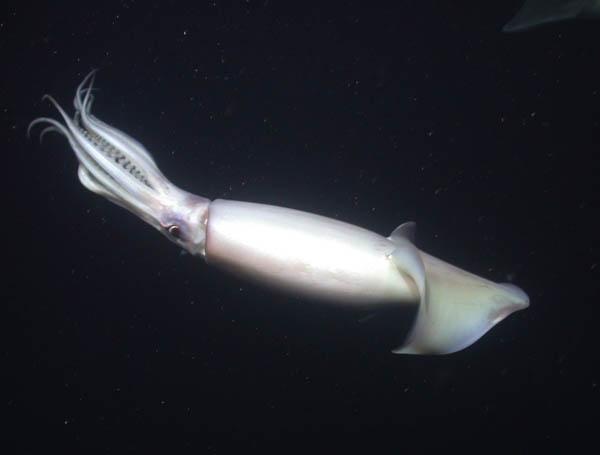
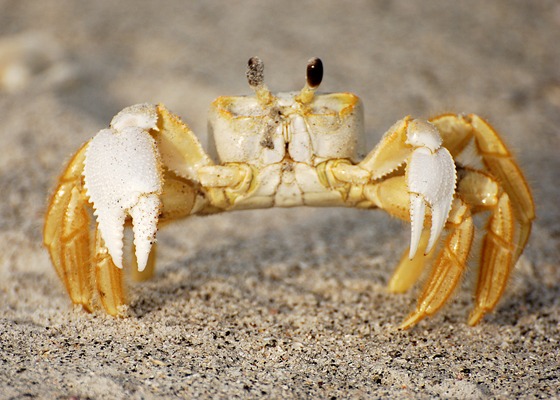



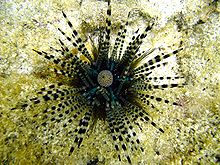
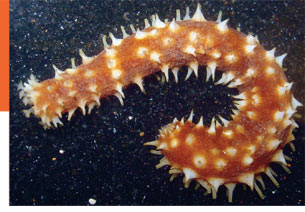
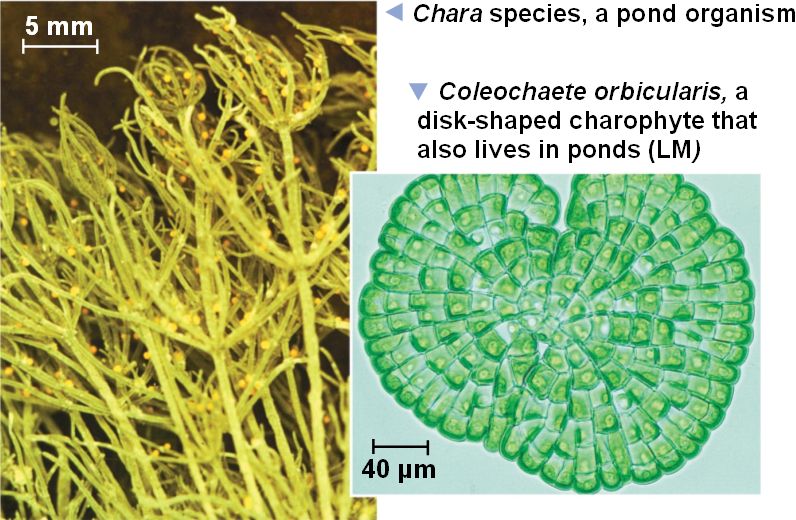






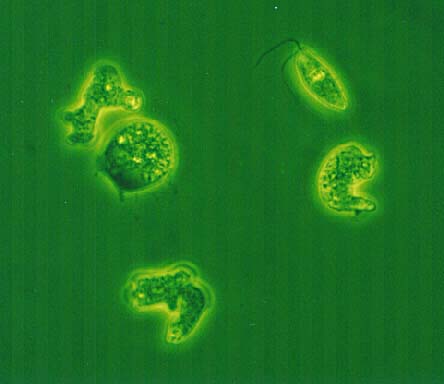





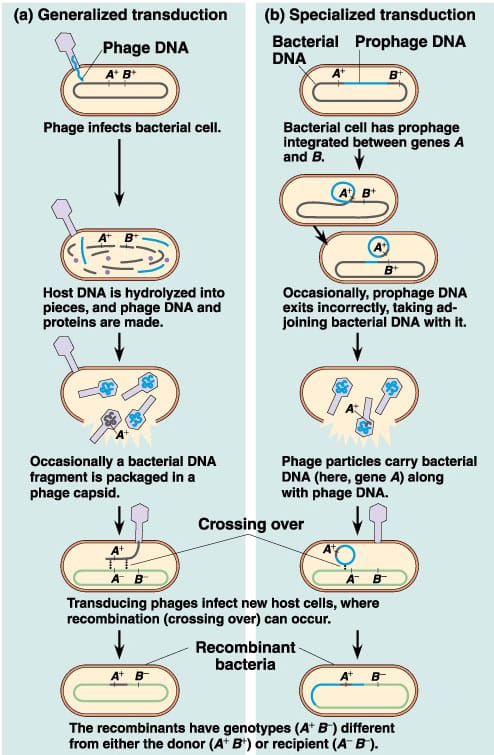

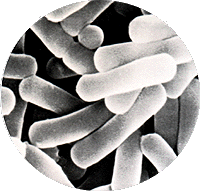
/S.Prakash/Figure%202.jpg)


